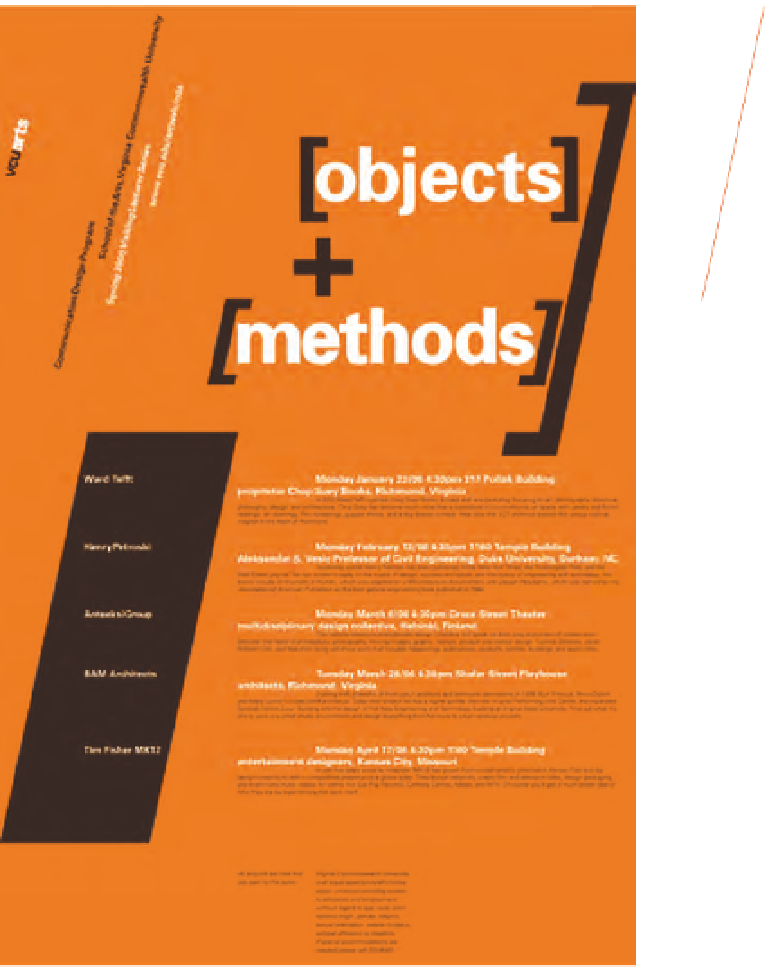Graphics Reference
In-Depth Information
IMPROVISATIONAL STRUCTURES
Improvisational structures evolve in response
to the specific elements of information,
as opposed to modular grids, which are
predetermined organizational devices. A
complete grasp of the visual material in
question enables designers to understand
the relationships between parts and to
create visual hierarchies among them. In the
metaphorical sense, typographic designers
are information architects—they “build”
typographic environments for clear and
accessible information.
Typographical materials are the building
blocks of improvisational structures. Once
it is known which elements are dominant,
subdominant, and subordinate, they are
translated into typographic forms reflecting
their hierarchical status. These forms,
consisting of different sizes and shapes, are
then introduced into the spatial field and
intuitively arranged until a rational and
aesthetic solution is found. For a poster
announcing a lecture series, designer David
Colley has organized the information into five
distinct zones: title, speakers, venues, sponsor,
and tertiary information. The improvised
structure not only communicates clearly
through legible typography and the effective
organization of contrasting parts, it also
provides a dynamic viewing experience based
on the language of asymmetrical composition
(Fig.
4-37
).
This flexible construction process
involves inserting typographic forms in space
to establish form and content relationships,
substituting these forms with revised forms
as necessary, and omitting forms that are
inconsequential.
Working with improvisational structures
calls for a firm understanding of asymmetrical
composition, the dynamics of positive and
negative space, and the essential role of visual
contrast among typographic elements.
4-37
The improvisational structure inherent in this
poster is built upon dynamic relationships between
horizontal, vertical, and diagonal axes. (Designer:
David Colley)







